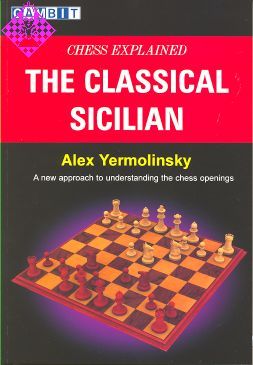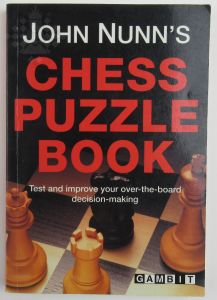Artikelnummer
LOYERTCS
Autor
The Classical Sicilian
111 Seiten, kartoniert, Gambit, 1. Auflage 2006
Aus der Reihe »Chess Explained«
Final vergriffen
Chess Explained is a new series of books about chess openings. They are not theoretical works in the traditional sense, but more a series of lessons from a chess expert with extensive over-the-board experience with an opening. You will gain an understanding of the opening and the middlegames to which it leads, enabling you to find the right moves and plans in your own games. It is as if you were sitting at the board with a chess coach answering your questions about the plans for both sides, the ideas behind particular moves, and what specific knowledge you need to have.
25 recent and highly instructive games discussed in detail
Chapter introductions emphasize the key points
Full indexes of games and variations
Extensive verbal explanations of plans and manoeuvres
The Classical Sicilian is one of the most popular and respected Systems of the Sicilian, and has been used frequently by players such as Anand, Kramnik and Shirov. Black develops his pieces more quickly than in many Sicilian Systems, and intricate piece-play often results. White's most popular and critical response is the Richter-Rauzer Attack, and recent years have seen a diversification in the plans for both sides in this perennially popular line. Against White's alternatives to the Rauzer, Yermolinsky covers lines that retain the independent significance of the Classical move-order, such as 6 Bc4 Qb6 - a line in which he is a leading specialist.
Grandmaster Alex Yermolinsky is one of the strongest players in the United States. He was US Champion in 1996, and won the US Open Championship in 1995 and 1997. His credentials as a teacher are no less impressive. He assisted Irina Levitina in her bid for the Women's World Championship in 1982-4, while his former pupils include several top-class grandmasters and a US Junior Champion. His previous book for Gambit, The Road to Chess Improvement, won the USCF Cramer Award for best instructional book.
Introduction
An Opening Book?
Honestly I never thought I'd write an opening book. The idea of collecting a large amount of material and dumping it on the poor reader somehow never appealed to me. As a practical player I never found much use for this kind of opening manual even before the computer era. Nowadays, when every tournament player travels with his laptop, thereby having instant access to a couple of million games, presenting a mass of variations in book form makes even less sense to me.
As much as the authors of opening monographs proclaim their devotion to explaining ideas, the reality is often just as I described - there's too much data and not enough verbiage. The necessity to cover a lot of ground can frustrate the best intentions of the authors. Indeed, the theory grows so fast that by the time the book is finished it needs twice as much space as was originally planned. Whatever little room is given to words, usually they come out as boring platitudes, such as "White's better pawn-structure guarantees him a stable advantage" or "Black has sufficient counterplay for the pawn". There's nothing wrong with these things per se, and I'll be using them in this book as much as the next guy. The problem is that such evaluations are often influenced by the result of the game, and name recognition (Anand played it with White, so it must be right). Obviously, the audon't have time to analyse all the games they refer to in depth, because of the sheer amount of those in question.
When I was approached by Gambit with an idea of writing an opening book I was quite sceptical, until I realized it was going to be different.
The format chosen by Gambit for its opening book series 'Chess Explained' provides for a deeper and more personalized coverage of opening ideas. Rather than putting the emphasis on supposedly 'best' moves, the actual games come first, allowing the reader to follow through to the end without being distracted by the newest theoretical verdicts that might soon become obsolete. Real explanation rather than heavy theory - I was sold on that. But what opening to choose?
The Classical Sicilian
I decided to play safe and go for the Classical Sicilian, an opening I have been playing as Black for almost three decades.
I was asked to choose twenty-five modern grandmaster games, which should be enough to cover the spectrum of ideas of any opening, even one as well-researched as the Classical Sicilian. Here I was tempted. Having played many different subvariations and having met with a variety of White's responses to them I could have probably based this book on my experiences alone. However, it wouldn't be fair to the reader, because the majority of the games wouldn't be recent and it would skew the book toward my personal taste. Instead, I had to plunge into the databases to fish out appropriate examples. Since this still happens to be an opening book, my choice went for shorter games or at least ones that were basically decided before the endgame was reached. The insufficient representation of the endgame may shift the statistics in White's favour and might be viewed as a shortcoming of this work.
Every game is illustrated by about nine diagrams, some of which follow the game, and some follow the notes. In most cases the variations given do not stray from a diagram for more than five or six moves. I hope this will make it possible for the more experienced reader to enjoy this book without the assistance of a chessboard and pieces.
Since this isn't an opening monograph in the conventional sense, I have broken the cardinal rule of citing every source at the end of each variation. As the result, some of you may find your moves given without attribution. For this I apologize.
And Finally...
Here's a word for those who expect an immediate return on their investment and prefer to play and study what is currently being played by the world elite. Theory is capricious: openings go in and out of fashion fast. Some ten to fifteen years ago the Classical Sicilian seemed more important than it does now. Indeed, some of the best players (such as Kramnik) have defected to the safety of the Petroff and Berlin Wall, but who knows what the future may bring? I hope this book will serve not as a requiem, but become an inspiration to future generations of Classical Sicilian aficionados.
Alex Yermolinsky
San Francisco, California
December 2005
25 recent and highly instructive games discussed in detail
Chapter introductions emphasize the key points
Full indexes of games and variations
Extensive verbal explanations of plans and manoeuvres
The Classical Sicilian is one of the most popular and respected Systems of the Sicilian, and has been used frequently by players such as Anand, Kramnik and Shirov. Black develops his pieces more quickly than in many Sicilian Systems, and intricate piece-play often results. White's most popular and critical response is the Richter-Rauzer Attack, and recent years have seen a diversification in the plans for both sides in this perennially popular line. Against White's alternatives to the Rauzer, Yermolinsky covers lines that retain the independent significance of the Classical move-order, such as 6 Bc4 Qb6 - a line in which he is a leading specialist.
Grandmaster Alex Yermolinsky is one of the strongest players in the United States. He was US Champion in 1996, and won the US Open Championship in 1995 and 1997. His credentials as a teacher are no less impressive. He assisted Irina Levitina in her bid for the Women's World Championship in 1982-4, while his former pupils include several top-class grandmasters and a US Junior Champion. His previous book for Gambit, The Road to Chess Improvement, won the USCF Cramer Award for best instructional book.
Introduction
An Opening Book?
Honestly I never thought I'd write an opening book. The idea of collecting a large amount of material and dumping it on the poor reader somehow never appealed to me. As a practical player I never found much use for this kind of opening manual even before the computer era. Nowadays, when every tournament player travels with his laptop, thereby having instant access to a couple of million games, presenting a mass of variations in book form makes even less sense to me.
As much as the authors of opening monographs proclaim their devotion to explaining ideas, the reality is often just as I described - there's too much data and not enough verbiage. The necessity to cover a lot of ground can frustrate the best intentions of the authors. Indeed, the theory grows so fast that by the time the book is finished it needs twice as much space as was originally planned. Whatever little room is given to words, usually they come out as boring platitudes, such as "White's better pawn-structure guarantees him a stable advantage" or "Black has sufficient counterplay for the pawn". There's nothing wrong with these things per se, and I'll be using them in this book as much as the next guy. The problem is that such evaluations are often influenced by the result of the game, and name recognition (Anand played it with White, so it must be right). Obviously, the audon't have time to analyse all the games they refer to in depth, because of the sheer amount of those in question.
When I was approached by Gambit with an idea of writing an opening book I was quite sceptical, until I realized it was going to be different.
The format chosen by Gambit for its opening book series 'Chess Explained' provides for a deeper and more personalized coverage of opening ideas. Rather than putting the emphasis on supposedly 'best' moves, the actual games come first, allowing the reader to follow through to the end without being distracted by the newest theoretical verdicts that might soon become obsolete. Real explanation rather than heavy theory - I was sold on that. But what opening to choose?
The Classical Sicilian
I decided to play safe and go for the Classical Sicilian, an opening I have been playing as Black for almost three decades.
I was asked to choose twenty-five modern grandmaster games, which should be enough to cover the spectrum of ideas of any opening, even one as well-researched as the Classical Sicilian. Here I was tempted. Having played many different subvariations and having met with a variety of White's responses to them I could have probably based this book on my experiences alone. However, it wouldn't be fair to the reader, because the majority of the games wouldn't be recent and it would skew the book toward my personal taste. Instead, I had to plunge into the databases to fish out appropriate examples. Since this still happens to be an opening book, my choice went for shorter games or at least ones that were basically decided before the endgame was reached. The insufficient representation of the endgame may shift the statistics in White's favour and might be viewed as a shortcoming of this work.
Every game is illustrated by about nine diagrams, some of which follow the game, and some follow the notes. In most cases the variations given do not stray from a diagram for more than five or six moves. I hope this will make it possible for the more experienced reader to enjoy this book without the assistance of a chessboard and pieces.
Since this isn't an opening monograph in the conventional sense, I have broken the cardinal rule of citing every source at the end of each variation. As the result, some of you may find your moves given without attribution. For this I apologize.
And Finally...
Here's a word for those who expect an immediate return on their investment and prefer to play and study what is currently being played by the world elite. Theory is capricious: openings go in and out of fashion fast. Some ten to fifteen years ago the Classical Sicilian seemed more important than it does now. Indeed, some of the best players (such as Kramnik) have defected to the safety of the Petroff and Berlin Wall, but who knows what the future may bring? I hope this book will serve not as a requiem, but become an inspiration to future generations of Classical Sicilian aficionados.
Alex Yermolinsky
San Francisco, California
December 2005
| EAN | 9781904600428 |
|---|---|
| Gewicht | 250 g |
| Hersteller | Gambit |
| Breite | 17,2 cm |
| Höhe | 24,8 cm |
| Medium | Buch |
| Erscheinungsjahr | 2006 |
| Autor | Alex Yermolinsky |
| Reihe | Chess Explained |
| Sprache | Englisch |
| Auflage | 1 |
| ISBN-10 | 1904600425 |
| ISBN-13 | 9781904600428 |
| Seiten | 111 |
| Einband | kartoniert |
004 Introduction
005 Symbols
006 1 Boleslavsky's Classical Approach
026 2 The Fischer-Sozin Attack
044 3 Richter-Rauzer: Early Deviations
064 4 Black Castles Kingside in the Richter-Rauzer
081 5 The Modern treatment of the Richter-Rauzer
108 List of Games
109 Index of Variations
005 Symbols
006 1 Boleslavsky's Classical Approach
026 2 The Fischer-Sozin Attack
044 3 Richter-Rauzer: Early Deviations
064 4 Black Castles Kingside in the Richter-Rauzer
081 5 The Modern treatment of the Richter-Rauzer
108 List of Games
109 Index of Variations
'Chess explained' is a new series of openings books about chess theory based on understanding of a opening.
A chess expert, in this case the phenomenal Alex Yermolinsky, will help you to develop an understanding of the Classical Sicilian which runs after the moves 1.e4 c5 2.Nf3 d6 3.d4 cxd4 4.Nxd4 Nf6 5.Nc3 Nc6, an opening which Yermolinsky is playing with success for years.
In this book I found 25 extensively analysed games where one game is good for around four pages of text included with around nine diagrams where some diagrams follow the game, and other the notes to it.
So it is for the more experienced reader not difficult to follow the game without the help of a chess board and pieces.
Some way these game annotations remind me of the extensive game analyses from Timman so well are they explained by Yermolinsky.
The material in this book is divided in to the following sections: Boleslavsky’s classical approach, The Fischer-Sozin attack, Richter-Rauzer: early deviations, Black castles kingside in the Richter-Rauzer and The treatment of the Richter-Rauzer.
Interesting to mention is that Yermolinsky analyses of his pet line with 6.Bc4 Qb6 where he is a leading specialist is, for this only I would buy this interesting written openings book!
But there is more, for example the Richter-Rauzer with some early deviations as :1.e4 c5 2.Nf3 d6 3.d4 cxd4 4.Nxd4 Nf6 5.Nc3 Nc6 6.Bg5 Bd7 7.Qd2 Rc8 8.0-0-0 Nxd4 9.Qxd4 Qa5 10.f4 Rxc3 11.bxc3 e5 12.Qb4 Qxb4 13.cxb4 Nxe4 14.Rd5! a invention of the young Ukrainian grandmaster Andrei Volokitin, is truly very instructive.
It is difficult to stop for me but one more line that I must mention is the modern treatment of the Rauzer 1.e4 c5 2.Nf3 d6 3.d4 cxd4 4.Nxd4 Nf6 5.Nc3 Nc6 6.Bg5 e6 7.Qd2 a6 8.0-0-0 Bd7 9.f4 b5 10.Bxf6 gxf6, after Yermolinsky the Kozul suicide variation, where Yermolinsky is responsible for keeping the torch burning.
Conclusion: A must openings book!
With kind permission of the author John Elburg (www.chessbooks.nl)
A chess expert, in this case the phenomenal Alex Yermolinsky, will help you to develop an understanding of the Classical Sicilian which runs after the moves 1.e4 c5 2.Nf3 d6 3.d4 cxd4 4.Nxd4 Nf6 5.Nc3 Nc6, an opening which Yermolinsky is playing with success for years.
In this book I found 25 extensively analysed games where one game is good for around four pages of text included with around nine diagrams where some diagrams follow the game, and other the notes to it.
So it is for the more experienced reader not difficult to follow the game without the help of a chess board and pieces.
Some way these game annotations remind me of the extensive game analyses from Timman so well are they explained by Yermolinsky.
The material in this book is divided in to the following sections: Boleslavsky’s classical approach, The Fischer-Sozin attack, Richter-Rauzer: early deviations, Black castles kingside in the Richter-Rauzer and The treatment of the Richter-Rauzer.
Interesting to mention is that Yermolinsky analyses of his pet line with 6.Bc4 Qb6 where he is a leading specialist is, for this only I would buy this interesting written openings book!
But there is more, for example the Richter-Rauzer with some early deviations as :1.e4 c5 2.Nf3 d6 3.d4 cxd4 4.Nxd4 Nf6 5.Nc3 Nc6 6.Bg5 Bd7 7.Qd2 Rc8 8.0-0-0 Nxd4 9.Qxd4 Qa5 10.f4 Rxc3 11.bxc3 e5 12.Qb4 Qxb4 13.cxb4 Nxe4 14.Rd5! a invention of the young Ukrainian grandmaster Andrei Volokitin, is truly very instructive.
It is difficult to stop for me but one more line that I must mention is the modern treatment of the Rauzer 1.e4 c5 2.Nf3 d6 3.d4 cxd4 4.Nxd4 Nf6 5.Nc3 Nc6 6.Bg5 e6 7.Qd2 a6 8.0-0-0 Bd7 9.f4 b5 10.Bxf6 gxf6, after Yermolinsky the Kozul suicide variation, where Yermolinsky is responsible for keeping the torch burning.
Conclusion: A must openings book!
With kind permission of the author John Elburg (www.chessbooks.nl)
Informationen zum Autor
Alex Yermolinsky ist einer der stärksten Großin den USA. Er war US-Meister 1996 und gewann die offeamerikanischen Meisterschaften 1995 und 1997. Er ist bekannt gedurch sein Buch „Der Weg zur Verbesserung im Schach".
Inhalte und Gliederung
Das Buch behandelt das klassische Sizilianisch nach 1.e4 c5 2.Sf3 d6 3.d4 cxd4 4.Sxd4 Sf6 5.Sc3 Sc6 anhand von 25 kommentierten Par
Die Bücher mit dem Titel „chess explained..." stellen eine neue Serie von Schacheröffnungsbüchern des Gambit-Verlages dar. Sie sind keine theoretischen Abhandlungen, sonmehr eine Serie in denen Schachlektionen von Experten gegewerden. Sie sollen tiefere Einin die Eröffungsideen und den später entstehenden Mittelspiegeben. Es soll dem Spieler helden richtigen Zug und Plan in seinen Partien zu finden und nicht den absolut letzten Stand der Eröffvermitteln, der nach der Erstellung des Buches ohnehin schon wieder hinfällig sein könnte. Das klassische Sizilianisch ist ein beliebtes System der sizilianischen Verteidigung, Es wird u.a. gespielt von Anand, Kramnik and Shirov. In der Turnierpraxis kommt diese Stelin fast allen Kategorien sehr häufig vor, so dass die vorliegende Abhandlung viele Tumierspieler indürfte. Schwarz entwihierbei seine Figuren schneller als in anderen Sizilianischen Systewobei sehr komplexe Stellunentstehen können. Schwarz baut sich flexibel auf und wartet ab, wie Weiß fortzusetzen gedenkt. Zu den beliebtesten Fortsetzungen gehören 6.Lc4 (der von Bobby Fischer bevorzugte Sozin-Angriff) oder der scharfe Richter-Rauser Anmit 6.Lg5, die sich beide digegen einen möglichen schwarVorstoß im Zentrum mit e5 richAndere, positionell ausgerichteAlternativen für Weiß im sechsten Zug wie 6.Le2 oder das in letzter Zeit in Mode gekommene 6.f3 lasdagegen den Zentrumsstoß 6... e5 zu und versuchen Kapital aus dem schwachen Punkt d5 zu schlaNach 5...d6 muss Weiß sich alje nach individuellem Geschmack entscheiden, wie er fortsetzen will. GM Yermolinsky beschäftigt sich intensiv mit den folgenden Hauptva
1. Boleslavsky's klassischer Anwo Weiß die Boleslavsky-Formation mit ...e5 zulässt.
6.g3, 6.h3, 6.Lb5 oder 6.Sxc6 [B56].
6.Le3 [B56];
6.f3, die moderne Behandlungswei[B56];
6.Le2, das Boleslawski-System [B58-59];
2. Fischer-Sozin-Angriff
6.Lc4, dem Sozin-Angriff [B57]; Hier blockiert Weiß 6...e5 und entden Läufer auf c4. Hier empfiehlt Yermolinsky für Schwarz die Benko-Variante mit 6..Db6, um die ausanalysierte Theorie zu umge
3.-5. Richter-Rauser-Angriff
6.Lg5, dem Richter-Rauser-Angriff [B60-B63, B65-B66]
Die Richter-Rauser-Variante wird ausführlich in 3 Kapiteln behandelt und stellt den Schwerpunkt des Bandar und gliedert sich wie folgt:
Frühe Abweichungen der Richter-Rauser-Variante
Schwarze Königsrochade in der Richter-Rauser-Variante (7....Le7, 8...0-0)
Moderne Behandlung der Richter-Rauser-Variante
In den vorgestellten Partien gibt Yereinen ausführlichen Text, in dem die Merkmale und die stellungsgemäßen Pläne für beide Seiausführlich und verständlich erärt werden.
Fazit:
Das Buch ist aufgrund der sehr guKommentierung der Partien und Pläne exzellent und sehr zu empfehDas Buch von Yermolinsky dürfte aufgrund der Beliebtheit des klassischen Sizilianers in der aktuelTurnierpraxis für eine breite Zielgruppe interessant sein.
Dr. Rene-Reiner Starke, Rochade Europa 7/2006
___________________
Das vorliegende Buch des amerikaGroßmeisters Alex Yermolinsky ist der Auftakt einer neuen Eröffnungsreihe beim englischen Verlag Gambit Publications.
Ziel ist dabei keine theoretische Arbeit, wie man es sonst bei Eröffnungsbüchern gewohnt ist, sonvor allem die Vermittlung der grundlegenden Ideen und Motive der Eröffnung und der sich daraus ergeMittelspielstellungen.
Der Autor hat hierfür 25 aktuelle Meisterpartien ausgewählt und ausführlich kommentiert. Thema des Buches ist das sogenannte klassische Sizilianisch, das mit den Zügen 1.e4 c5 2.Sf3 d6 3.d4 cxd4 4.Sxd4 Sf6 5.Sc3 Sc6 eingeleitet wird. In übersichtlichen Einführung vermittelt Yermolinsky zunächst jeweils einen ersten Überblick, danach folgen die sehr schön kommentierten Partien.
Das mit 112 großformatigen und gut gefüllten Seiten ausgestattete Werk dürfte für eine breite Schicht an Spielern, die sich für dieses Eröffnungsthema interessieren, sehr lehrreich sein, man darf schon jetzt auf die Fortsetzungen in dieser neuen Reihe gespannt sein.
Der Leser sollte allerdings zuminGrundkenntnisse in Englisch mitbringen, da zunächst keine deutÜbersetzungen dieser Reihe geplant sind.
Schach Markt 3/2006
___________________
Der Autor ist der bekannte ameriGroßmeister. Das Thema seiner Untersuchung ist die Sizili-anische Verteidigung nach den Zügen: 1.e4 c5 2.Sf3 d6 3.d4 cxd4 4.Sxd4 Sf6 5.Sc3 Sc6 und jetzt werden auf der Basis von 25 praktischen Beispielen Partien mit folgenden Varianten analysiert: 6.g3, 6.Le3, 6.f3, 6.Le2, 6.Lc4 und als die Haupt6.Lg5. Was dieses Buch auszeichnet sind die ausführlichen Kommentare zu jeder Partie, mit vielen guten Ideen und Vorschlägen ergänzt.
Eine sehr gute Arbeit!
Jerzy Konikowski, Fernschach International 2/2006
Alex Yermolinsky ist einer der stärksten Großin den USA. Er war US-Meister 1996 und gewann die offeamerikanischen Meisterschaften 1995 und 1997. Er ist bekannt gedurch sein Buch „Der Weg zur Verbesserung im Schach".
Inhalte und Gliederung
Das Buch behandelt das klassische Sizilianisch nach 1.e4 c5 2.Sf3 d6 3.d4 cxd4 4.Sxd4 Sf6 5.Sc3 Sc6 anhand von 25 kommentierten Par
Die Bücher mit dem Titel „chess explained..." stellen eine neue Serie von Schacheröffnungsbüchern des Gambit-Verlages dar. Sie sind keine theoretischen Abhandlungen, sonmehr eine Serie in denen Schachlektionen von Experten gegewerden. Sie sollen tiefere Einin die Eröffungsideen und den später entstehenden Mittelspiegeben. Es soll dem Spieler helden richtigen Zug und Plan in seinen Partien zu finden und nicht den absolut letzten Stand der Eröffvermitteln, der nach der Erstellung des Buches ohnehin schon wieder hinfällig sein könnte. Das klassische Sizilianisch ist ein beliebtes System der sizilianischen Verteidigung, Es wird u.a. gespielt von Anand, Kramnik and Shirov. In der Turnierpraxis kommt diese Stelin fast allen Kategorien sehr häufig vor, so dass die vorliegende Abhandlung viele Tumierspieler indürfte. Schwarz entwihierbei seine Figuren schneller als in anderen Sizilianischen Systewobei sehr komplexe Stellunentstehen können. Schwarz baut sich flexibel auf und wartet ab, wie Weiß fortzusetzen gedenkt. Zu den beliebtesten Fortsetzungen gehören 6.Lc4 (der von Bobby Fischer bevorzugte Sozin-Angriff) oder der scharfe Richter-Rauser Anmit 6.Lg5, die sich beide digegen einen möglichen schwarVorstoß im Zentrum mit e5 richAndere, positionell ausgerichteAlternativen für Weiß im sechsten Zug wie 6.Le2 oder das in letzter Zeit in Mode gekommene 6.f3 lasdagegen den Zentrumsstoß 6... e5 zu und versuchen Kapital aus dem schwachen Punkt d5 zu schlaNach 5...d6 muss Weiß sich alje nach individuellem Geschmack entscheiden, wie er fortsetzen will. GM Yermolinsky beschäftigt sich intensiv mit den folgenden Hauptva
1. Boleslavsky's klassischer Anwo Weiß die Boleslavsky-Formation mit ...e5 zulässt.
6.g3, 6.h3, 6.Lb5 oder 6.Sxc6 [B56].
6.Le3 [B56];
6.f3, die moderne Behandlungswei[B56];
6.Le2, das Boleslawski-System [B58-59];
2. Fischer-Sozin-Angriff
6.Lc4, dem Sozin-Angriff [B57]; Hier blockiert Weiß 6...e5 und entden Läufer auf c4. Hier empfiehlt Yermolinsky für Schwarz die Benko-Variante mit 6..Db6, um die ausanalysierte Theorie zu umge
3.-5. Richter-Rauser-Angriff
6.Lg5, dem Richter-Rauser-Angriff [B60-B63, B65-B66]
Die Richter-Rauser-Variante wird ausführlich in 3 Kapiteln behandelt und stellt den Schwerpunkt des Bandar und gliedert sich wie folgt:
Frühe Abweichungen der Richter-Rauser-Variante
Schwarze Königsrochade in der Richter-Rauser-Variante (7....Le7, 8...0-0)
Moderne Behandlung der Richter-Rauser-Variante
In den vorgestellten Partien gibt Yereinen ausführlichen Text, in dem die Merkmale und die stellungsgemäßen Pläne für beide Seiausführlich und verständlich erärt werden.
Fazit:
Das Buch ist aufgrund der sehr guKommentierung der Partien und Pläne exzellent und sehr zu empfehDas Buch von Yermolinsky dürfte aufgrund der Beliebtheit des klassischen Sizilianers in der aktuelTurnierpraxis für eine breite Zielgruppe interessant sein.
Dr. Rene-Reiner Starke, Rochade Europa 7/2006
___________________
Das vorliegende Buch des amerikaGroßmeisters Alex Yermolinsky ist der Auftakt einer neuen Eröffnungsreihe beim englischen Verlag Gambit Publications.
Ziel ist dabei keine theoretische Arbeit, wie man es sonst bei Eröffnungsbüchern gewohnt ist, sonvor allem die Vermittlung der grundlegenden Ideen und Motive der Eröffnung und der sich daraus ergeMittelspielstellungen.
Der Autor hat hierfür 25 aktuelle Meisterpartien ausgewählt und ausführlich kommentiert. Thema des Buches ist das sogenannte klassische Sizilianisch, das mit den Zügen 1.e4 c5 2.Sf3 d6 3.d4 cxd4 4.Sxd4 Sf6 5.Sc3 Sc6 eingeleitet wird. In übersichtlichen Einführung vermittelt Yermolinsky zunächst jeweils einen ersten Überblick, danach folgen die sehr schön kommentierten Partien.
Das mit 112 großformatigen und gut gefüllten Seiten ausgestattete Werk dürfte für eine breite Schicht an Spielern, die sich für dieses Eröffnungsthema interessieren, sehr lehrreich sein, man darf schon jetzt auf die Fortsetzungen in dieser neuen Reihe gespannt sein.
Der Leser sollte allerdings zuminGrundkenntnisse in Englisch mitbringen, da zunächst keine deutÜbersetzungen dieser Reihe geplant sind.
Schach Markt 3/2006
___________________
Der Autor ist der bekannte ameriGroßmeister. Das Thema seiner Untersuchung ist die Sizili-anische Verteidigung nach den Zügen: 1.e4 c5 2.Sf3 d6 3.d4 cxd4 4.Sxd4 Sf6 5.Sc3 Sc6 und jetzt werden auf der Basis von 25 praktischen Beispielen Partien mit folgenden Varianten analysiert: 6.g3, 6.Le3, 6.f3, 6.Le2, 6.Lc4 und als die Haupt6.Lg5. Was dieses Buch auszeichnet sind die ausführlichen Kommentare zu jeder Partie, mit vielen guten Ideen und Vorschlägen ergänzt.
Eine sehr gute Arbeit!
Jerzy Konikowski, Fernschach International 2/2006
Mehr von Gambit
-
 Learn Chess Tactics18,95 €
Learn Chess Tactics18,95 € -
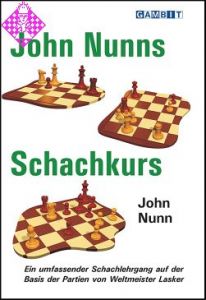 John Nunns Schachkurs17,95 €
John Nunns Schachkurs17,95 € -
 Lektionen zur Schachstrategie12,95 €
Lektionen zur Schachstrategie12,95 € -
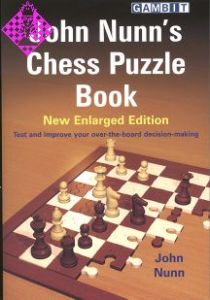 John Nunn's Chess Puzzle Book17,95 €
John Nunn's Chess Puzzle Book17,95 € -
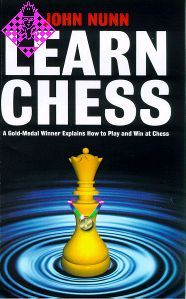 Learn Chess12,50 €
Learn Chess12,50 € - Mehr von Gambit

